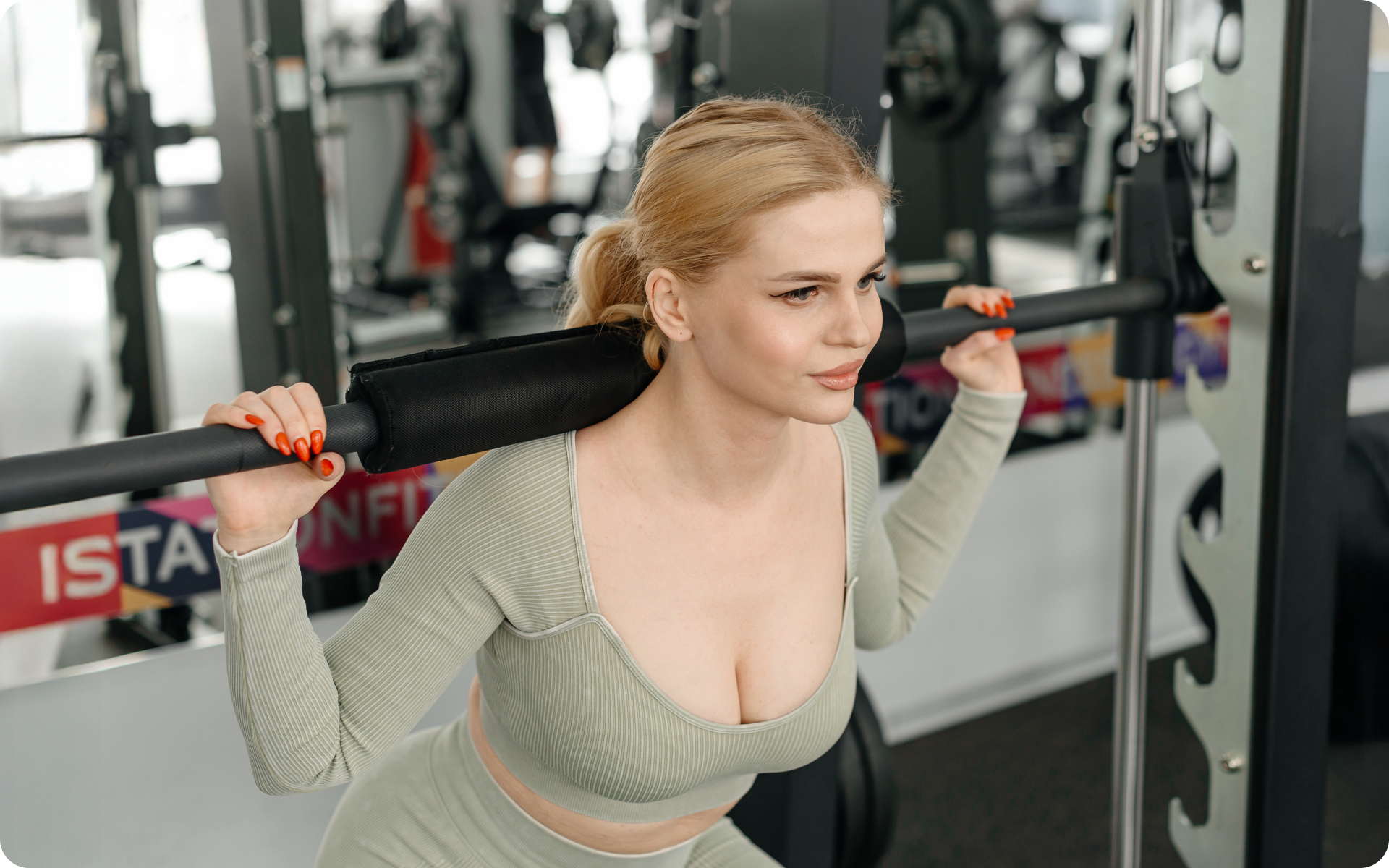A common notion is that track and field training abides by one training program. However, take it from track and field Olympians, this training is well-rounded with a variety of exercises. To be an Olympian you have to be faster, stronger, more efficient and more skilled than the next guy. To do this you have to incorporate several training programs to be thoroughly prepared. This article will go over the best track and field training workouts that help build Olympians. We have not laid out a specific training plan because plans will vary depending on your particular event. With this in mind, here is a guideline on what you need to include in your track and field training plan. Check it out!
Get your personalized
meal plan!
What Are Track And Field?
Before we discuss how you should train for such an event, we need to familiarize ourselves with the event itself. As the name suggests, the event is derived from where the activity takes place, which is either on the running track or the area adjacent to the field (7).
Track and field include competitive athletic events such as running, weight throwing and jumping. In addition to these, it contains events such as sprints, relays, jumps, race walks, hurdles, marathons, middle and long distances (7). Other events such as the discus, hammer, javelin, and shot put are also categorized under track and field (7).
Track And Field Training
As mentioned earlier, the assumption is that the participants of such events train use one exercise program, mostly running. Notably this would not be effective because, for example, throws require an athlete’s body to be flexible.
Running is primarily effective in building leg strength, endurance, and athletic performance. That said, it may not be the best activity to build flexibility. This means that you have to incorporate several exercises to help train all your body muscles and help build stamina, flexibility, endurance, strength, and power.
Read More: Triathlete Weight Training: The Best Training Plan For A Triathlon
What Is The Best Track And Field Training Workout?
Track and field Olympians’ training schedules or programs vary depending on numerous factors (7). These factors include:
The Specific Activity
Of course, the first factor you have to consider is the specific activity you are undertaking. For example, the training program for the track may be different from that of field activity. A long-distance Olympian will use a different training schedule than someone participating in a discus or javelin activity.
-
Timeline
Again, you also have to consider the timeline you are training. Depending on when your event will occur, the program may vary to help you prepare adequately.
-
Aim
There are different aims set by individuals taking part in the track and field Olympics (7). For example, those participating in track events may need to improve their speed and endurance. Those participating in field events may want to improve their athletic performance (7). Workout plans will differ due to the different aims. Due to the difference in the aims, there will also be a difference in the training method. For example, you may find that some long-distance runners or those participating in track events focus on training per mileage.
However, individuals participating in field events may focus on training to build stamina and cover specific miles per hour. As a result, they will run at a different pace than those participating in track events.
However, fitness experts state that the training for track and field should be well-rounded despite these differences. This means that you should not concentrate on one training program but instead switch things up (6).
Similarly, you should not exercise one muscle group. For example, if you are on track, you should not only exercise your leg muscles. The same applies for those in field events. For instance, you should not exercise your hands or upper body if you throw a discus.
You have to exercise all muscle groups as it helps bring coordination to your movements (6). So, you have to focus on workouts that target all body muscle groups. Some of the proposed exercises for individuals training for track and field include:
Weightlifting Workouts
These workouts are vital as they entail compound movements that increase muscle power and efficiency (3). Most weightlifting programs will require athletes to incorporate either machines or resistance bands.
This increased resistance helps increase the efficiency of your workouts, resulting in improved track and field performance (3). Olympians never miss weightlifting workouts as they are the foundation of building muscle strength and fixing muscle imbalances (6).
Additionally, weight training for track and field reduces your injury risk. Remember that we mentioned that these exercises help reduce muscle imbalances, reducing injury risk from balance or stability problems. Similarly, by doing these workouts, you learn how to maintain the correct form and distribute weight evenly, which is crucial for any athlete (6).
WebMD also acknowledges that weightlifting or strength training, as it is also known, is crucial for any athlete as it slows down the effects of aging (4). As we age, we lose muscle and bone density, which may increase the risk of arthritis.
Performing strength training workouts increases your metabolism which helps reduce your risk of osteoporosis and other bone-thinning problems (4). Likewise, these workouts improve your blood sugar control, sleep, and mental health (4).
Some of the most recommended track and field strength training exercises for athletes include Romanian deadlifts, bench press, power cleans, and the dumbbell split jerk. However, these may vary depending on the specific event you are performing. So, seek professional guidance before adding any strength training exercise to your routine.
BetterMe app will provide you with a host of fat-frying fitness routines that’ll scare the extra pounds away and turn your body into a masterpiece! Get your life moving in the right direction with BetterMe!
Key Pointers
These workouts can be dangerous if not performed correctly despite the discussed benefits. So, we urge you to:
- Follow a specific weightlifting training program that matches your goals.
- Use comfortable weights.
- Learn the correct technique of each exercise.
- Seek professional guidance to master the proper form and muscle activation.
- Increase your loads gradually and over time.
- Start with bodyweight exercises and then progress to those requiring weights.
- Take it easy and avoid going too hard too soon.
Stretching Workouts
These exercises are also imperative in a workout plan for anyone who wants to pursue track and field. These exercises improve muscle flexibility, range of motion, and circulation (2).
All these contribute to an athlete’s better performance in their workouts and competitions. In addition, thanks to stretching, an athlete can have a reduced risk of injury because of muscle flexibility created by fighting muscle stiffness (2).
The other benefit of stretching for an athlete is the reduced onset of muscle soreness. Fatigue and muscle soreness may cause you a victory if it shows up early on in the competition. Stretching delays this and increases your athletic performance, allowing you to compete for a longer duration.
Key Pointers
Unfortunately, most people are fooled by the simplicity of most stretches and end up injuring themselves. Just because a stretch seems easy does not mean it is not injurious. So, keep in mind the following (2):
- It will help if you hold your stretch for the required seconds or breaths.
- Breathe normally, and do not hold your breath unless instructed otherwise.
- Pay attention to the correct form and posture.
- Warm-up first to avoid working with stiff muscles.
- Practice often because nailing most stretches will require a lot of practice.
Boxing
Next, fitness experts state that individuals looking for track and field training workout plans often add boxing to their schedule (4). Boxing is considered an effective exercise to fuel your enthusiasm and help improve endurance.
WebMD also reveals that boxing is an excellent activity for athletes to tone their muscles, improve agility, and develop coordination of various muscle groups (4). The explosive rotation of the movement also allows you to burn more calories and improve stability and balance.
Plyometric Training
Plyometric exercises are also effective training programs for athletes as they help them build explosive power. They are also called jump training exercises and help an athlete generate maximum force in the shortest amount of time.
These exercises are incorporated into a strength training program to help skyrocket intensity. Some of the best plyometric exercises that fitness experts suggest athletes add to their training plan include box jumps, plyo lunges, lateral jumps, and band resistance broad jumps.
Sports experts particularly recommend this exercise for those participating in jump events. Plyometric exercises have been found safe and effective training workouts for improving sprint and jumping performances (1). They can also be performed by other athletes as they effectively improve agility (1).
Key Pointers
Fitness experts advise you to brace yourself as these intensive workouts demand a lot of energy in a single session. More so, they also suggest you do the following (1):
- Do your research to determine the correct form of each plyometric exercise.
- Start with the exercises that require a slow pace before progressing to those that need a fast pace.
- Warm up before performing these exercises, and end your routine with cooldowns.
- Schedule some rest days because plyometric exercises are incredibly demanding, and performing them continuously may make you overexert.
Cardiovascular Training
Cardio or aerobic exercises are also other exercises that individuals performing field and track events can perform early on in their training. Multiple studies show that athletes can get the most out of cardio, especially earlier on in their training.
This training specifically helps with weight loss as it requires more energy, which causes your body to torch calories. In addition, research shows that sprinters, jumpers, weight men and distance runners in track and field can reduce body fat if they perform cardio (5).
That said, the same research showed that a season of training did not significantly change the percentage of body fat in these athletes. This is because, by then, the athletes were already fit (5). So, cardiovascular training may be significant before the normal training schedule to help lose any unwanted pounds.
Read More: Athlete Workout Plan: How To Train Like A Pro
When Should You Start Training For Track And Field Events?
You can never be too early when preparing for these events. However, the haven is at least eight weeks before the track and field events’ normal training begins. In the United States, most outdoor track and field events start in March and last till June.
This means you could start training in November if your regular training begins in January. Now in Europe and Asia, such events kick off in September (6). This would have you beginning to train around May.
Remember that just because experts state you start training in July or January, doesn’t mean that you should not train in the other months. You ought to avoid falling out of shape and help build overall strength, cardiovascular functioning, and muscular endurance over time. The only difference would be the intensity. You would train with less intense workouts months before the scheduled events. However, you must increase your intensity when the events are close by.
How To Start Speed Training In Track And Field
The best place to start for track and field training is by determining the timeline you are working with. As mentioned above, the training dates are different in different countries.
Secondly, it would be best if you worked with a professional. They will guide you on picking the right exercises and in the correct form (6). But before all this, we suggest you talk to your doctor. They have to assess that you are in the right state to participate in track and field.
Betterme will keep you laser-focused on your weight loss journey! Nutrient-packed meal plans, fat-blasting workouts, galvanizing challenges and much more. Try using the app and see for yourself!
The Bottom Line
Track and field training combines different exercise programs to help athletes build muscle strength, flexibility, endurance, and stability. Such a training plan includes weightlifting exercises, plyometrics, cardio activities, and boxing.
The intensity and the duration of how long you should perform these activities may vary depending on the specific activity you are training for. So, be sure to talk to a professional before adding these activities to your training plan. We wish you the best of luck!
DISCLAIMER:
This article is intended for general informational purposes only and does not serve to address individual circumstances. It is not a substitute for professional advice or help and should not be relied on for making any kind of decision-making. Any action taken as a direct or indirect result of the information in this article is entirely at your own risk and is your sole responsibility.
BetterMe, its content staff, and its medical advisors accept no responsibility for inaccuracies, errors, misstatements, inconsistencies, or omissions and specifically disclaim any liability, loss or risk, personal, professional or otherwise, which may be incurred as a consequence, directly or indirectly, of the use and/or application of any content.
You should always seek the advice of your physician or other qualified health provider with any questions you may have regarding a medical condition or your specific situation. Never disregard professional medical advice or delay seeking it because of BetterMe content. If you suspect or think you may have a medical emergency, call your doctor.
SOURCES:
- Effects of Plyometric Training on Physical Fitness in Team Sport Athletes: A Systematic Review (2016, ncbi.nlm.nih.gov)
- Six tips for safe stretches (2019, health.harvard.edu)
- Strength Training Tips From the Pros (2016, webmd.com)
- The Basics: Build Muscle for Better Health (2006, webmd.com)
- The Effect of Track-and-Field Training on Cardiovascular Fitness (1981, pubmed.ncbi.nlm.nih.gov)
- Want to Be an Olympian? Train Smarter, Train Harder (2021, webmd.com)
- What is athletics? Everything you need to know about track and field (2021, olympics.com)












